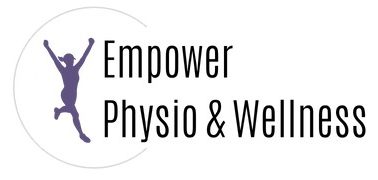One of the most commonly overlooked parts of healing from surgery or an injury requiring stitches is the scar–but it’s so important! Whether you had a knee replacement, c-section, laceration injury, mastectomy, spine surgery, or dermatological procedure, making sure the scar heals well not only benefits you cosmetically, but also helps you get back to reaching, lifting, and moving well. Learn how to heal a scar faster in today’s post.
What’s the issue with scar tissue?
A scar is your body’s way of repairing a significant cut or injury. Scars can form on the skin, as well as in deeper soft tissue like muscle, tendons, and ligaments. When soft tissue is cut or injured, the body lays down scar tissue in place of the original tissue. It would be great if the body could perfectly replace the damaged tissue, but it can’t quite get there. Scar tissue doesn’t stretch as well, move as well, or look and feel quite the same as the original tissue. This is why you can visibly see scars–and why they can sometimes be painful long after the injury is healed.
How well a scar heals is most important when the scar is over or in close proximity to a joint, or in a place where a lot of movement occurs. Remember, scar tissue doesn’t move or stretch as well. That becomes a big deal when you’ve had a knee replacement and are trying to get your knee to bend well again.
Scar characteristics
Want to know how to heal a scar faster? The biggest thing to focus on is ensuring the scar doesn’t get sticky. Look out for dimpling around the surrounding skin. This happens because the scar has adhered to layers of tissue and pulls the skin along with it. You want to make sure these adhesions don’t happen so everything can move well. You can also feel for firmness or hard areas under the skin when you press on it. These hard areas are adhesions or thick bundles of excessive scar tissue surrounding the scar.
Keloid scars on the other hand look different than typical scars. They’re generally more stretched out, are often raised, and look visibly different from the skin around them. This results from an overgrowth of scar tissue extending beyond the original injury.
Since keloid scars are more visible, there are many treatments available to reduce their appearance and the discomfort they cause. Keloid scars can be treated medically with a variety of topical treatments, or even surgery in extreme cases. Mild keloid scars also respond to some of the techniques listed below.
How to treat scars at home
The good news is that scars can get unstuck! You can also help prevent adhesions before they happen with an easy, at-home technique. But before we get to that, it’s very important to know that you must let the skin heal completely before manipulating it at all. This is NOT to be done on open skin or wounds and can actually delay healing and make the scar worse.
If you have a new scar and the skin is fully healed, you can start with gentle scar mobilizations. Take either your thumb or pointer and middle fingers and place them directly on the scar. Press down with medium pressure and move your finger(s) in a circular motion, keeping the same skin contact the whole time. Be sure not to let your finger(s) slide on the scar. Perform both clockwise and counterclockwise for 3-5 minutes total.
If you have an older scar (3+ months), then you can be more aggressive with scar mobilization. Press a little harder and pull a little further in that circular motion. You can also increase the time to 5-7 minutes.
Professional techniques to treat scars
Looking for a more aggressive technique? A physical therapist or massage therapist can promote optimal scar healing. Based on your individual needs, any of the following in addition to scar mobilizations could be helpful:
- Deep tissue and myofascial release. Scars can affect deep tissue and the surrounding fascia. Getting these tissues moving well will help prevent adhesions from the scar.
- Cupping. This is a great technique for stretching superficial tissue and increasing blood flow. The tissue stretch from cupping helps the scar not get sticky or adhere to the surrounding tissue. Blood flow = healing, so to help the tissue repair and heal, blood flow is important. Note: Cupping isn’t great for keloid scars.
- Instrument-assisted soft tissue release (IASTM). This involves using a plastic, stone, or metal hand-held tool and sliding it along the skin to improve mobility of the skin, fascia, muscle, and scar tissue. It can also break up adhesions and prevent future ones from happening.
- Dry needling. If you’ve read my past blog posts, you know I’m a huge fan of dry needling. It’s also a great way to promote scar healing and mobility, especially deep scar tissue or adhesions from c-sections, deep tissue excisions, or surgery.
Now you know all about how to heal a scar faster! If you’ve tried scar mobilization at home and want help from a professional, let’s chat about how I can help you.



